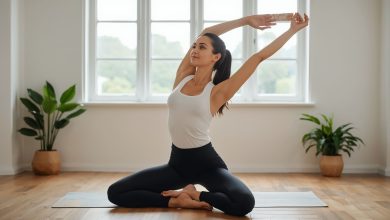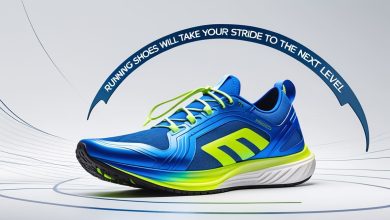Rucking Benefits: Add Weight to Your Walk to Boost Fitness and Strength

Discover the amazing rucking benefits—add weight to your walk to boost fitness, build strength, and improve overall health. Learn how to get started with rucking today on Fitzolife!
In the world of fitness, there’s always a new trend or workout routine promising to deliver incredible results. But sometimes, the most effective exercises are the simplest ones. Enter rucking—a low-tech, high-reward activity that combines walking with added weight to boost fitness, build strength, and improve overall health. Whether you’re a fitness enthusiast or a beginner looking for a practical way to stay active, rucking might just be the workout you’ve been searching for. In this article, we’ll explore the benefits of rucking, how to get started, and tips to maximize your results.
What is Rucking?
Rucking is the act of walking with a weighted backpack, also known as a rucksack. It originated in the military, where soldiers carry heavy loads over long distances as part of their training. However, you don’t need to be in the military to enjoy the benefits of rucking. It’s a simple, accessible, and highly effective form of exercise that anyone can do.
The concept is straightforward: load a backpack with weight, put it on, and start walking. The added weight increases the intensity of your walk, turning it into a full-body workout that challenges your cardiovascular system, builds muscle, and burns calories.
The Benefits of Rucking
Rucking offers a wide range of physical and mental benefits. Here’s why you should consider adding it to your fitness routine:
1. Improves Cardiovascular Health
- Rucking elevates your heart rate, making it an excellent cardiovascular workout. Unlike running, which can be hard on the joints, rucking is low-impact while still providing a solid cardio challenge.
- Regular rucking can improve your endurance, lower blood pressure, and reduce the risk of heart disease. For more on the benefits of cardio, check out this guide from the American Heart Association.
2. Builds Strength and Muscle
- Carrying extra weight engages your core, legs, back, and shoulders, helping to build muscle and increase overall strength.
- The resistance provided by the weighted backpack turns a simple walk into a strength-training session. Learn more about strength training benefits in this article by Mayo Clinic.
3. Burns More Calories
- Rucking burns significantly more calories than regular walking. The added weight forces your body to work harder, increasing your energy expenditure.
- On average, rucking can burn between 300-600 calories per hour, depending on your weight, speed, and the load you’re carrying. Use this calorie calculator to estimate your burn.
4. Enhances Posture and Core Stability
- Carrying a weighted backpack requires you to maintain proper posture to avoid strain. Over time, this strengthens your core and improves your overall posture.
- A strong core is essential for balance, stability, and preventing injuries. Check out these core exercises to complement your rucking routine.
5. Boosts Mental Toughness
- Rucking is as much a mental challenge as it is a physical one. Carrying a heavy load over distance requires focus, determination, and resilience.
- Completing a rucking workout can give you a sense of accomplishment and build mental toughness. Learn more about the mental benefits of exercise in this Psychology Today article.
6. Low-Impact and Joint-Friendly
- Unlike high-impact exercises like running, rucking is gentle on the joints while still providing a challenging workout.
- It’s an excellent option for people recovering from injuries or those who prefer low-impact activities. For more on low-impact workouts, visit WebMD.
7. Versatile and Accessible
- Rucking requires minimal equipment—just a backpack and some weight. You can do it anywhere, whether you’re in the city, on a trail, or in your neighborhood.
- It’s suitable for all fitness levels, and you can easily adjust the intensity by changing the weight or distance.
8. Encourages Outdoor Activity
- Rucking gets you outside and moving, which has additional benefits for mental health. Spending time in nature can reduce stress, improve mood, and boost creativity. Learn more about the benefits of outdoor exercise in this Harvard Health article.
How to Get Started with Rucking
Ready to give rucking a try? Here’s a step-by-step guide to help you get started:
1. Choose the Right Backpack
- Use a sturdy, comfortable backpack with padded shoulder straps and a waist belt. Military-style rucksacks are ideal, but any durable backpack will work.
- Make sure the backpack fits well and distributes the weight evenly across your back. Check out this guide to choosing a rucking backpack.
2. Add Weight
- Start with a light load, such as 10-15 pounds (4.5-6.8 kg). You can use weight plates, sandbags, or even household items like water bottles or books.
- As you get stronger, gradually increase the weight. A good rule of thumb is to carry 10-20% of your body weight.
3. Wear Proper Footwear
- Invest in a pair of comfortable, supportive shoes or boots with good traction. Proper footwear is essential to prevent blisters and injuries. Here’s a list of the best rucking shoes to consider.
4. Plan Your Route
- Choose a route that matches your fitness level. Beginners can start with flat terrain, while more advanced ruckers can tackle hills or trails.
- Aim for a distance of 2-5 miles (3-8 km) to start, and gradually increase as you build endurance.
5. Maintain Good Form
- Keep your back straight, shoulders relaxed, and core engaged. Avoid leaning forward or hunching over.
- Take short, steady steps and maintain a consistent pace.
6. Stay Hydrated
- Bring water with you, especially on longer rucks. Staying hydrated is crucial for performance and recovery. Learn more about hydration tips from CDC.
7. Track Your Progress
- Use a fitness tracker or app to monitor your distance, time, and calories burned. Tracking your progress can help you stay motivated and set new goals.
Tips for Maximizing Your Rucking Workout
To get the most out of rucking, keep these tips in mind:
- Start Slow: If you’re new to rucking, start with a lighter weight and shorter distance. Gradually increase the intensity as your fitness improves.
- Mix It Up: Vary your routes, weights, and distances to keep your workouts challenging and engaging.
- Incorporate Intervals: Add intervals of faster walking or jogging to increase the intensity and boost calorie burn.
- Stretch Afterward: Stretch your muscles after rucking to improve flexibility and reduce soreness. Try these post-workout stretches.
- Listen to Your Body: If you experience pain or discomfort, adjust your weight or take a break. Rucking should be challenging but not painful.
Rucking vs. Other Forms of Exercise
How does rucking compare to other popular forms of exercise? Here’s a quick breakdown:
- Rucking vs. Running: Rucking is lower impact and easier on the joints, making it a better option for people with joint issues. It also builds more strength due to the added weight.
- Rucking vs. Hiking: Rucking is more intense than hiking because of the added weight. It provides a greater cardiovascular and strength-building challenge.
- Rucking vs. Weightlifting: While weightlifting focuses on isolated muscle groups, rucking provides a full-body workout that also improves endurance and cardiovascular health.
Who Should Try Rucking?
Rucking is suitable for almost anyone, regardless of age or fitness level. It’s particularly beneficial for:
- Fitness Enthusiasts looking for a new challenge.
- Beginners seeking a simple, effective way to get in shape.
- Outdoor Lovers who enjoy walking or hiking.
- Busy Professionals who want a time-efficient workout.
- Military or Law Enforcement Personnel preparing for physical tests.
Final Thoughts
Rucking is a simple yet powerful way to enjoy the benefits of rucking, including improved fitness, strength, and mental toughness. By adding weight to your walk, you can transform a basic activity into a full-body workout that delivers impressive results. Whether you’re looking to burn calories, build muscle, or simply enjoy the outdoors, rucking is a versatile and accessible option.
So, grab a backpack, load it up, and hit the road. Your body—and mind—will thank you. For more fitness tips and guides, visit Fitzolife.



